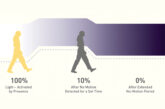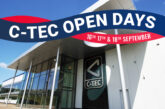
In this regular column, ‘Dr Zzeus’ Tom Brookes, MD of Zzeus Training and chairman of the FSA, answers your questions related to fire safety compliance. In this month’s edition he looks at the correct clipping distances for fire-resistant cables.
Q. What are the correct clipping distances for fire-resisting cables? My manager has instructed us to clip at 1 metre intervals, however I’m concerned that this may compromise circuit integrity during a fire. Could you clarify the correct distances and the potential consequences of incorrect spacing?
When determining appropriate clipping distances for fire-resistant cables, BS 5839-1:2017 provides essential guidance for installing and supporting alarm cables, particularly in sections 26.2(f) and 26.2(g), and Clause 37, which addresses installation practices and workmanship.
A critical aspect of the standard is the emphasis on ensuring the circuit integrity of cables during a fire, which is vital for the safety of both building occupants and emergency services.
To prevent premature failure, the standard explicitly prohibits using plastic clips and ties as the primary means of support, which could melt in high temperatures. Instead, it advises following the recommendations provided by cable manufacturers for secure fixings.
The tragic events of the Harrow Court fire in Stevenage on 2nd February 2005 serves as a stark reminder of the consequences of incorrect cable fixings.
Falling cables, supported by non-fire-resistant fixings, played a significant role in the deaths of two firefighters. This tragedy underscores the critical need for fire-resistant cable supports, ensuring cables remain securely fixed during a fire. Subclause 37.2(b) of BS 5839-1:2017 mandates that fixings must be secure and in accordance with the manufacturer’s guidelines. It also specifies that suspended ceilings shouldn’t be relied upon for supporting cables, as they can fail in fire conditions.
Cable manufacturers generally recommend fixing intervals of 300 mm for horizontal runs and 400 mm for vertical installations, especially for cables with diameters between 8 mm and 15 mm. These intervals are important for maintaining circuit integrity, as demonstrated by testing under BS 8434-2, which validates similar fixing arrangements for fire-resisting cables.
In certain circumstances, such as vertical cable drops in areas that are less accessible, slightly extended fixing intervals may be considered acceptable after thorough risk assessments by system designers and installers.
An example of this is the vertical drop of cables from a roof or floor to a device within a suspended ceiling. In these cases, the cable industry allows some flexibility, permitting vertical cable drops without fixing to structural elements, as long as the following conditions are met:
1. The maximum allowable vertical cable drop without fixing is 1 metre.
2. Fixings should be placed as close as practicably possible to the vertical drop to restrict cable movement and prevent slack.
3. Any spare cable loops intended for future re-termination must be securely fixed to avoid kinking.
4. The manufacturer’s minimum bending radius must be followed, particularly in cable loops, at device entry points, or where the cable changes direction beyond the last fixing.
5. Loop diameters should generally not exceed 150 mm, unless the manufacturer’s recommendations specify otherwise.
6. Surplus horizontal cable should be kept to an absolute minimum.
Finally, BS 7671 contains a general requirement that wiring systems must be supported in a way that prevents premature collapse in the event of a fire. This provision further reinforces the prohibition on the use of plastic clips and ties for fire-resistant cables.
For more guidance on BS 7671, the IET On-Site Guide is a valuable resource, offering detailed advice on compliance and best practices for electrical installations, ensuring safety and reliability during fire events.
Do you have a question you’d like answered? Email your queries to: Tom@Zzeus.org.uk
Get more details about Zzeus Training and the range of courses on offer here
Catch up on previous ‘Dr. Zzeus Q&A’ articles here








